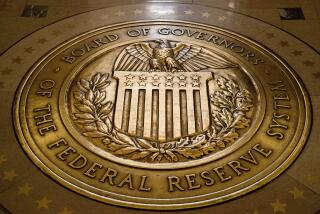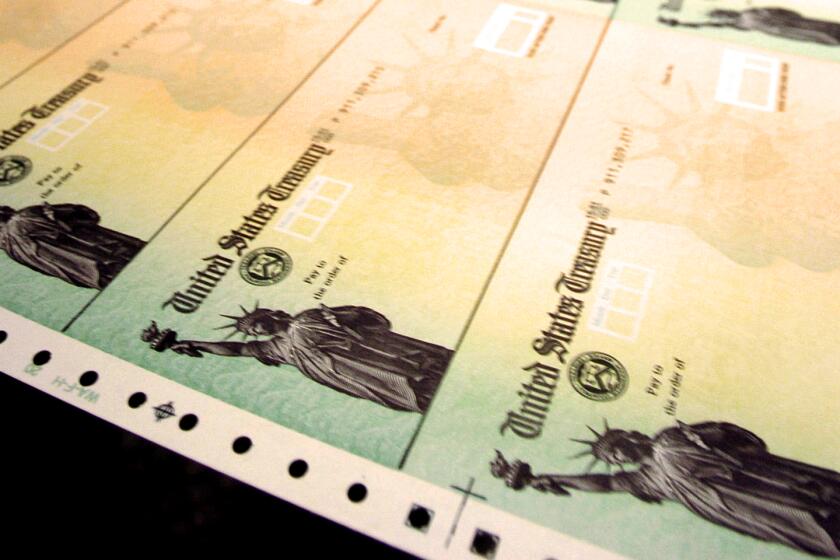Banks Raising Credit Standards for Businesses
- Share via
The Federal Reserve on Tuesday said banks made businesses meet stricter credit standards and terms for bank loans in recent months, a move that partially offsets the central bank’s recent interest-rate cut.
“The results indicate some further tightening of standards and terms for commercial and industrial [C&I;] loans over the past three months,” the Fed said in summarizing the results of its latest survey of banks’ senior loan officers.
The poll is conducted about four times a year and asks about changes in bank credit availability to businesses and households. The survey included responses from 55 large U.S. banks and 20 branches of large foreign banks.
The demand for C&I; loans and commercial real estate loans weakened between the newest poll and the one released in August, the Fed said.
The Fed cut short-term interest rates last week to help give the lackluster economy a shot in the arm, but many economists say lower rates may help little as long as demand for credit remains slack.
In special questions asked only for the most recent poll, the Fed asked why C&I; loan volume had fallen, noting one measure of commercial and industrial loans had seen an annual rate of decline of more than 7% in the first nine months of 2002.
“According to domestic respondents, the most important reason for the [decrease] in C&I; loans is the reduced funding needs of credit-worthy borrowers; indeed, almost three-fourths of domestic banks identified this factor as being ‘most important,’ ” the Fed said.
But the central bank also noted that the U.S. banks said their tightening of standards over the last nine months had contributed to the smaller number of firms being identified as credit-worthy.
Foreign banks, however, were less likely to say the decline in credit-worthy borrowers was due only to more stringent standards.
The survey lends some support to recent complaints from a Washington-based lobbying group that banks are being too tough on businesses.
“Some banks have gone so far as to put lending to the entire manufacturing sector off limits. Some are reducing the appraised value of machinery and equipment, reducing the borrower’s collateral base, and still others are raising loan fees [so] high that any advantage of the Fed’s reduction of interest rates is erased,” said Jerry Jasinowski, president of the National Assn. of Manufacturers, last week.
The Fed cut rates by a larger-than-expected half-percentage point, but then said the risks to the economy were balanced between slow growth and inflation, a signal it was unlikely to cut rates again soon.
The Fed said U.S. banks reported “largely unchanged” standards on home mortgages and consumer loans, while demand for consumer credit was reported to be unchanged since the last survey.
Almost half of U.S. banks polled said between 20% and 40% of customers who had refinanced their mortgages had engaged in “cash-out” transactions. In those refinancings, the borrower is able to turn the rise in their homes’ value into cash, supporting household spending.
More to Read
Inside the business of entertainment
The Wide Shot brings you news, analysis and insights on everything from streaming wars to production — and what it all means for the future.
You may occasionally receive promotional content from the Los Angeles Times.










